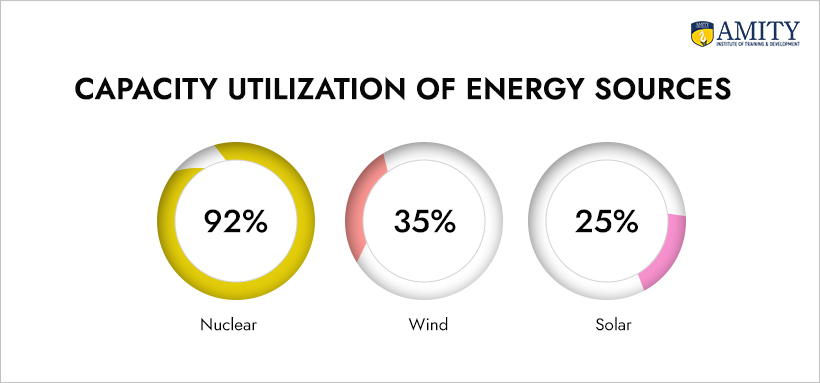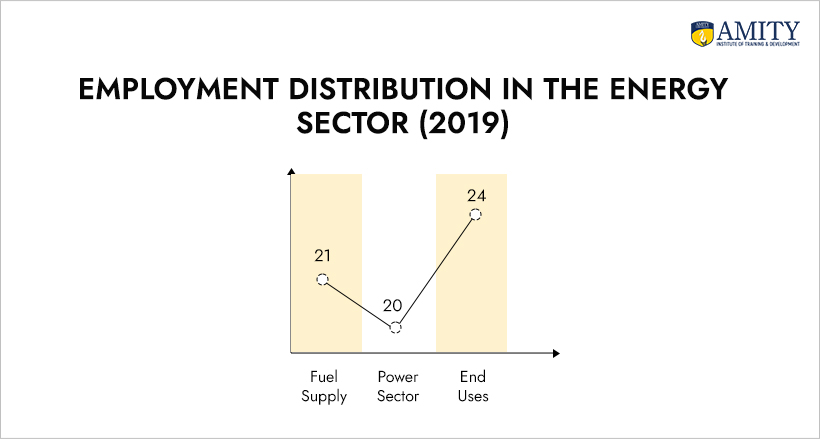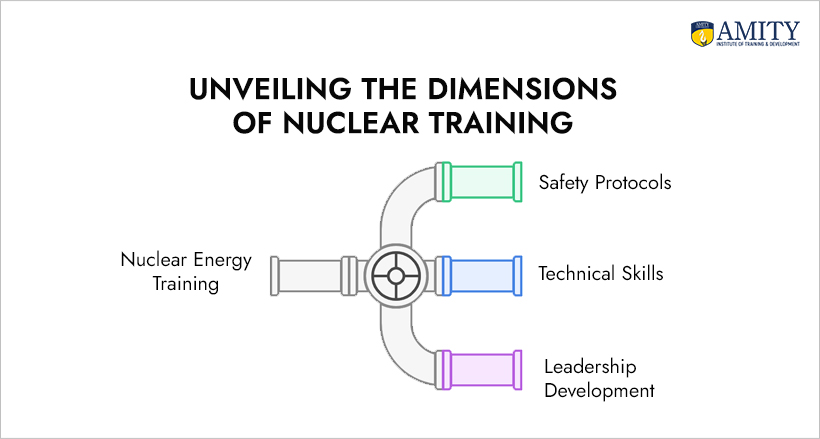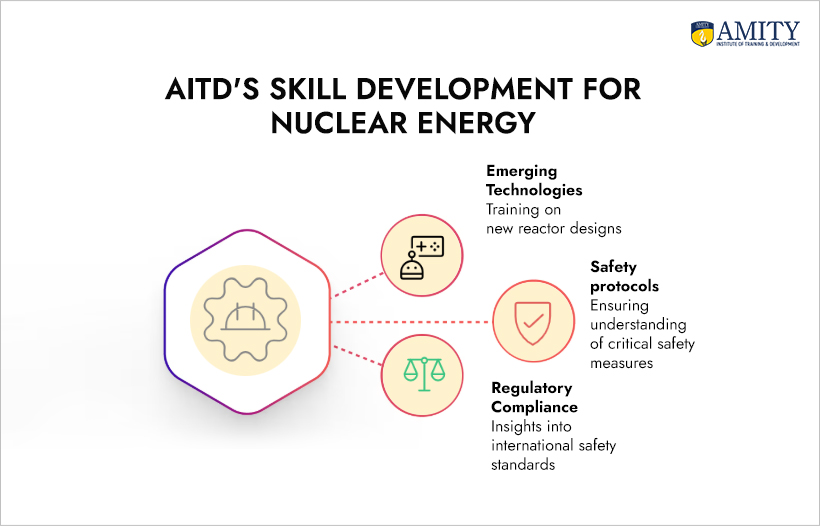Tech-Driven Solutions

Unlocking the potential of nuclear energy is key for a green future. This is the energy from the nucleus of atoms, through fission or fusion. For instance, nuclear power plants produce electricity through fission. Therefore, it helps meet global energy needs. India’s companies, such as NPCIL, are leading the nuclear expansion.
Nuclear energy accounts for about nearly 20 percent of electricity in the United States and is also the foundation of medical treatments as well as space exploration.
This blog explores professional development in the nuclear industry. It covers definitions, examples, uses, and training needs in nuclear energy.
Key Takeaways
- Professional development is important for safety as well as efficiency in nuclear.
- CPD Keeps professionals with trends and good practices.
- The AITD is one of the organizations offering nuclear skills.
- The two sides of nuclear energy must be known to make a decision.
DO YOU KNOW? Countries like India are investing heavily in nuclear energy, with plans to increase their capacity by 63% by 2032.
Understanding Nuclear Energy
To understand the significance of professional development in the nuclear industry, first of all, one needs to comprehend what nuclear energy is. Nuclear energy is the energy produced when there is a nuclear reaction taking place, which primarily is through fission: a process in which the nucleus of an atom splits; it is then the produced heat that will generate vapor that turns the turbines producing electricity in a nuclear power plant.

DO YOU KNOW? Nuclear power plants operate at more than 92% capacity, significantly higher than other energy sources like wind (35%) and solar (25%).
Explore Nuclear Energy Examples: Diverse Applications Across Industries
Some of the notable nuclear energy examples are:
- Nuclear Power Plants: These are plants that utilize nuclear fission to produce electricity.
- Medical Applications: Radioactive isotopes used in diagnosis and treatment of diseases.
- Industrial Applications: Radiation for quality control and material testing.

DO YOU KNOW? More than 65 million worked in the energy sector in 2019. That means over 2% of total jobs in the world were in that field.
Recognizing the Nuclear Energy Symbol: A Critical Aspect of Training
Nuclear energy is challenging and Safety first. People have to be constantly trained so they are abreast with tech and rules. The International Atomic Energy Agency offers programs for developing skills that are needed for nuclear energy management.

Training is in the following areas:
- Safety Protocols: Understanding safety culture and regulatory compliance.
- Technical Skills: Operations procedure mastery and equipment handling.
- Leadership Development: Developing future leaders through specialized training.
The Role of Nuclear Energy Companies in India in Promoting CPD
It remains true that CPD in any nuclear field is critical to all. CPD elevates the level of knowledge, skills, and professional advancement. CPD helps the professional stay updated and dedicated to excellence.
Companies like Nuclear Institute consider CPD to be a major achievement both to careers and companies. Teams would therefore always keep sharp and ready to new challenges.
DO YOU KNOW? AITD offers over 150 specialized training programs for the nuclear sector. These programs cover technical and managerial skills.

In the white paper “Modernizing Training in the Nuclear Power Industry,” by Dr. Olivia M. Blackmon, Charles Lease, and Billy Mack, they are arguing for more new training approaches. By 2035, it will need about 236,000 new employees. This number will jump to 376,000 by 2050. The industry must find new ways to train workers well.
What Are the Nuclear Energy Pros and Cons?
Awareness of the pros and cons of nuclear energy helps professionals in this sector understand the issues involved in harnessing nuclear energy.
Pros
- Much less greenhouse gas emissions as compared to fossil fuels.
- Energy density is very high, therefore an enormous amount of electricity may be produced from a very minute fuel.
- Consistent power supply.
Cons
- Radioactive waste disposal.
- High cost initially of building nuclear plants.
- Public perception arising out of past accidents.
How do companies in India dealing with nuclear energy contribute to professional development?
India has pushed nuclear energy growth forward by heavily investing in training. For example, NPCIL (a nuclear power company) relies more on local talent. This is done by providing interns, apprentices, and training to the staff members.
How Do Nuclear Energy Companies in India Contribute to Professional Development?
India has been committed to expanding its nuclear energy capacities. There have been sizeable investments in training courses by the various nuclear energy companies in India, one of which is the NPCIL. These companies specifically aim at building talent in the region through internships and apprenticeships as well as specific training courses directed towards the enhancement of skills in the business.
What Resources Are Available Through Nuclear Energy Agencies?
Several organizations support professional development in the nuclear industry. The IAEA offers training on safety and management in the nuclear industries. National agencies also have guidelines for educational programs to build a skilled workforce.
What Role Can AITD Play in Promoting Professional Development in the Nuclear Industry?
It is an institution that molds the future of nuclear professionals. Amity Institute of Training & Development (AITD) trains on nuclear energy. This makes sure that the people trained can make it in this high-speed industry.
DO YOU KNOW? Over 90% of participants report improved job performance after completing AITD training programs.
AITD’s Approach to Developing Skills for Nuclear Energy Plants
AITD offers courses that compete with the state-of-the-art in nuclear energy technology and practices. It addresses specific challenges for professionals. It discusses everything from technology to safety.

- Safety Protocols: Ensuring all trainees know the important safety protocols that have to be observed in a nuclear power plant.
- Regulatory Compliance: A discussion of how to abide by the standards for safety in nuclear energy plants set forth by the agencies involved in the nuclear energy agencies.
- New Technologies: Training for fresh designs of reactors, including the new innovations on operation performance.
DO YOU KNOW? To date, over 500 people have successfully transitioned to leadership positions in nuclear sectors through the various leadership programs offered at AITD.
How AITD Aligns with the Goals of the Nuclear Energy Agency
AITD supports the culture of the nuclear sector through continuous learning. This, in other words, is to ensure professionals have skills required to overcome problems and challenges through provision of the best available resources on training.
Benefits of AITD’s Training Programs
- Better Knowledge: The participants learn about various nuclear energy examples and its practical applications in industries such as healthcare and space exploration.
- Networking: AITD has organized events like the nuclear energy summit, where professionals can interact with industry leaders and peers, thereby helping to create collaboration and sharing of knowledge.
- Career Advancement: The AITD’s training programs enhance the qualification level of professionals, which enhances the competitive nature of professionals in the job market within nuclear energy companies in India and worldwide.
How Can AITD Support Your Career Growth?
By collaborating with organizations like AITD, professionals gain easy access to current training material targeting their nuclear industry. It is only through the implementation of new-style training methods that individuals’ careers and, most importantly, the nuclear sector as a whole will move forward and be sustainable.







